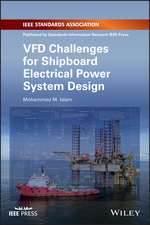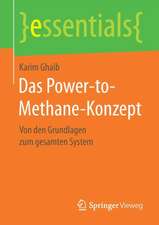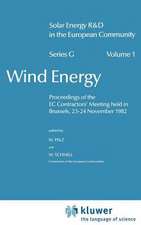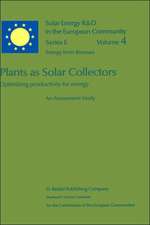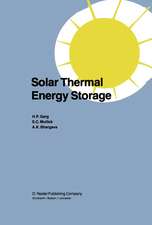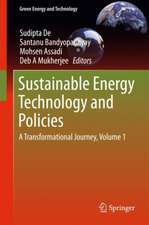Sugarcane as Biofuel Feedstock: Advances Toward a Sustainable Energy Solution
Editat de Barnabas Gikonyoen Limba Engleză Hardback – 6 mai 2015
As the world’s energy hunger grows ever larger, fossil fuel reserves are diminishing—and concerns about climate change remind us that our love affair with fossil fuels cannot continue much longer. This has inspired intense research into sustainable energy sources. Biofuels seemed initially promising, but the world soon realized that food-based biofuel has its own dangers. Second-generation biofuels, however, use biomass from crops' inedible parts—such as the stalks and leaves of sugarcane—offering a far more practical, sustainable, and commercially viable solution.
In this book, researchers from around the world review some of the most important and timely topics related to using sugarcane feedstock for biofuel. After a basic overview, topics such as these are included:
- Pretreatment methods
- The use of various microbial technologies, including bacteria and yeast, to enhance biofuel production
- Environmental impacts
- Economic feasibility
- The viability of electricity being produced side by side with biofuel
| Toate formatele și edițiile | Preț | Express |
|---|---|---|
| Paperback (1) | 579.62 lei 6-8 săpt. | |
| Apple Academic Press Inc. – 31 mar 2021 | 579.62 lei 6-8 săpt. | |
| Hardback (1) | 930.30 lei 6-8 săpt. | |
| Apple Academic Press Inc. – 6 mai 2015 | 930.30 lei 6-8 săpt. |
Preț: 930.30 lei
Preț vechi: 1134.51 lei
-18% Nou
Puncte Express: 1395
Preț estimativ în valută:
178.02€ • 183.65$ • 148.55£
178.02€ • 183.65$ • 148.55£
Carte tipărită la comandă
Livrare economică 27 martie-10 aprilie
Preluare comenzi: 021 569.72.76
Specificații
ISBN-13: 9781771881296
ISBN-10: 1771881291
Pagini: 342
Ilustrații: 65 black & white illustrations
Dimensiuni: 152 x 229 x 18 mm
Greutate: 0.79 kg
Ediția:1
Editura: Apple Academic Press Inc.
Colecția Apple Academic Press
ISBN-10: 1771881291
Pagini: 342
Ilustrații: 65 black & white illustrations
Dimensiuni: 152 x 229 x 18 mm
Greutate: 0.79 kg
Ediția:1
Editura: Apple Academic Press Inc.
Colecția Apple Academic Press
Public țintă
Academic and PostgraduateCuprins
Introduction. Part I: Overview. Part II: Cultivation and Optimization Processes. Part III: Economic and Environmental Factors. Part IV: Options for the Future. Index.
Notă biografică
Barnabas Gikonyo graduated from Southern Illinois University, Carbondale, Illinois (2007), with a PhD in organic and materials chemistry. He currently teaches organic and general chemistry classes at the State University of New York Geneseo, along with corresponding laboratories and the oversight of general chemistry labs. His research interests range from the application of various biocompatible, polymeric materials as "biomaterial bridging surfaces" for the repair of spinal cord injuries, to the use of osteoconductive cements for the repair of critical sized bone defects/fractures. Currently, he is studying the development of alternative, non-food biofuels.
Descriere
This title includes a number of Open Access chapters.
As the world’s energy hunger grows ever larger, fossil fuel reserves are diminishing—and concerns about climate change remind us that our love affair with fossil fuels cannot continue much longer. This has inspired intense research into sustainable energy sources. Biofuels seemed initially promising, but the world soon realized that food-based biofuel has its own dangers. Second-generation biofuels, however, use biomass from crops' inedible parts—such as the stalks and leaves of sugarcane—offering a far more viable solution. In this book, researchers from around the world review some of the most important and timely topics related to using sugarcane feedstock for biofuel.
As the world’s energy hunger grows ever larger, fossil fuel reserves are diminishing—and concerns about climate change remind us that our love affair with fossil fuels cannot continue much longer. This has inspired intense research into sustainable energy sources. Biofuels seemed initially promising, but the world soon realized that food-based biofuel has its own dangers. Second-generation biofuels, however, use biomass from crops' inedible parts—such as the stalks and leaves of sugarcane—offering a far more viable solution. In this book, researchers from around the world review some of the most important and timely topics related to using sugarcane feedstock for biofuel.



